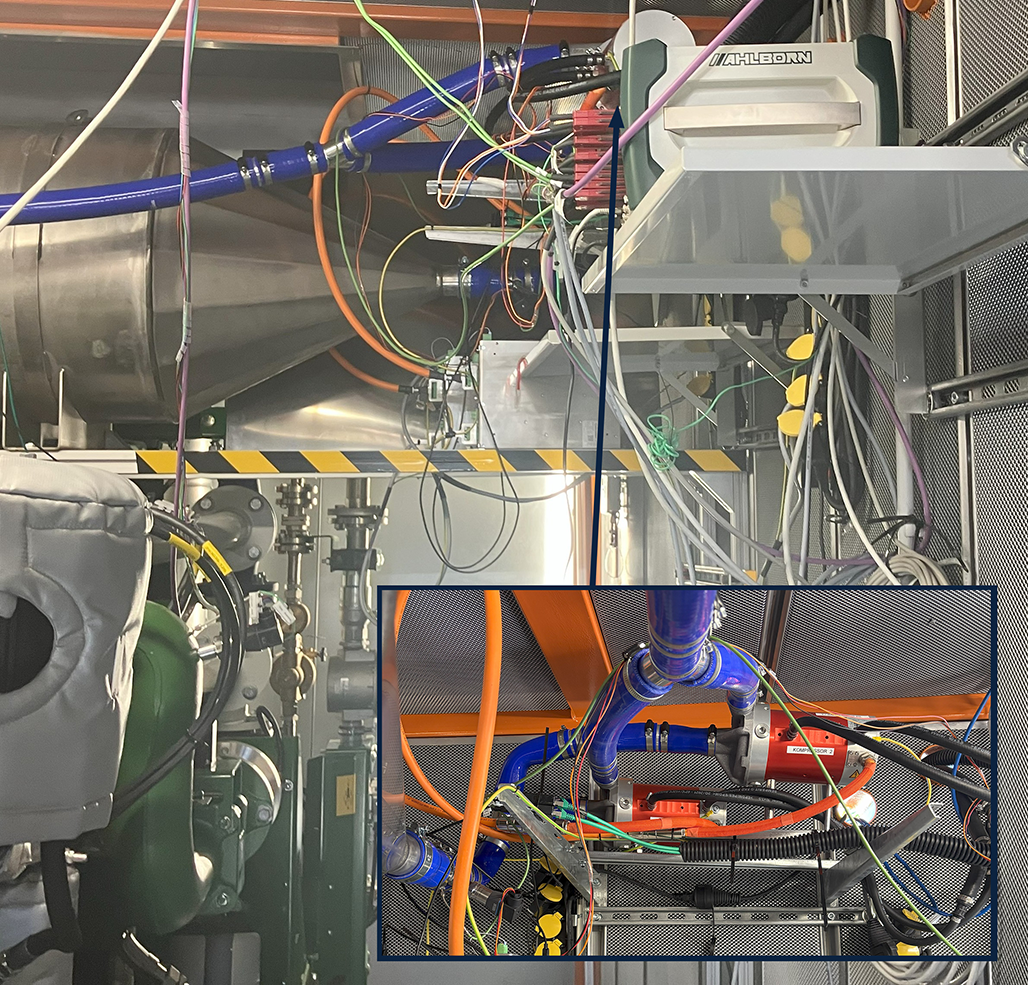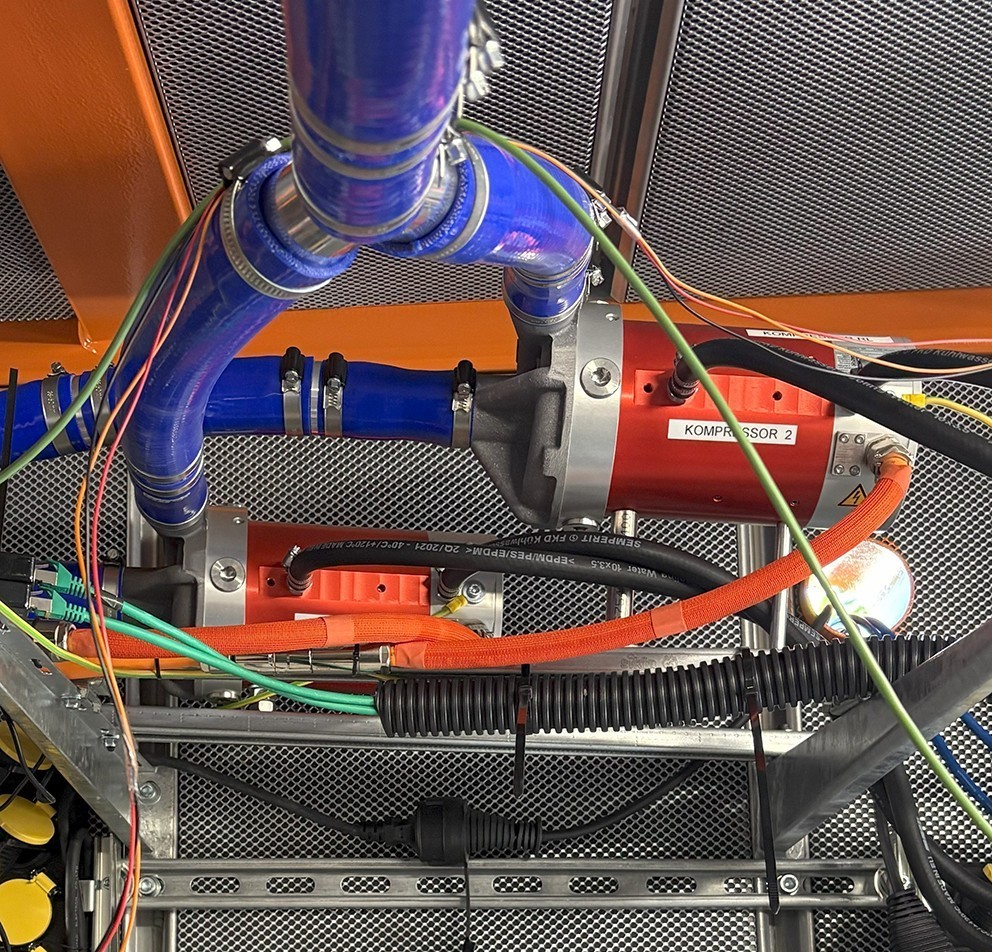Exhaust gas recirculation for hydrogen combustion engines (H₂-ICE)
Opportunities and challenges of a proven concept in a new application
Opportunities and challenges of a proven concept in a new application
Climate-neutral mobility is at the heart of the global energy and transportation transition. Hydrogen is seen as one of the energy carriers – particularly for heavy duty vehicles, stationary power generation and other areas of application where performance and reliability are non-negotiable. In addition to the fuel cell, the hydrogen combustion engine (hydrogen internal combustion engine, H₂-ICE) is also moving back into the focus of the industry.
Key issues in the development of H₂-ICE are the reduction of nitrogen oxide emissions (NOₓ) and the control of the problematic combustion process, which occurs abruptly. A key technology known from the emission reduction of conventional combustion engines is also important here: exhaust gas recirculation (EGR).
In a project with the University of the Bundeswehr and HDC Solutions GmbH, Celeroton supplied two CT-25-10000 compressors specially designed for operation at overpressure, by means of which combustion gas (mainly steam and air) can be extracted from the exhaust manifold of a 6-cylinder 12 l in-line engine, before it enters the exhaust gas turbocharger. The engine is designed as a combined heat and power unit. The compressors are necessary because the pressure in the exhaust manifold is relatively low at approximately 2 bara and the absolute pressure on the mixture formation side in the intake system is in the range of 2.2 to 2.4 bara. Celeroton turbo compressors were selected as the technical solution, as they are extremely compact and have a particularly high degree of efficiency by design as a flow machine. In addition, as gas-bearing systems, they offer the security that no lubricant is introduced into the fresh gas.
The combustion of hydrogen differs fundamentally from that of gasoline or diesel in several respects:
Exhaust gas recirculation kicks in at the last points. Part of the exhaust gases are fed back into the intake air system. These inert gases (mainly H₂O and N₂) lower the combustion temperature by increasing the heat capacity and dilution. This reduces the thermal NOₓ formation without directly intervening in the combustion process. Furthermore, the lowered temperature level and the mixture diluted with inert gas leads to a reduction in the unwanted triggering of ignitions, for example in the compression stroke in the presence of lubricants.
In conventional otto engines, EGR can reduce NOₓ emissions by up to 50-70%. However, the application in hydrogen engines is more complex.


NOₓ is the main pollutant gas in combustion with hydrogen. Combustion temperatures can be lowered through targeted exhaust gas recirculation, thereby reducing NOₓ formation – especially under high load. In certain operating ranges, EGR can even help to stabilize combustion. For example, by reducing the flame speed in high-load or high-speed ranges. In combination with exhaust gas turbocharging, the EGR system can be efficiently integrated into existing structures – for example through high-pressure EGR paths directly behind the turbo compressor.
Hydrogen has a high ignition propensity. In extreme cases, recirculated exhaust gases still containing H₂ could cause premature ignition or increase the risk of reignition in the intake passage. A too high EGR rate can have a negative impact on efficiency – especially in conjunction with low combustion. A delicate balance between NOₓ reduction and efficiency optimization is necessary. H₂ can lead to embrittlement and increased corrosion in certain environments. Exhaust gases also contain water vapor, which can condense during recirculation and cooling – with effects on components and sensors. Controlling the EGR rate is technically challenging, as H₂ engines are highly dynamic. Precise control is essential, especially under transient conditions.
Various concepts can be considered for the implementation of EGR in H₂-ICE:
It also makes sense to combine this with other measures – such as water injection, variable valve control or lambda control for optimum mixture management.
Successful integration requires a systemic approach: from combustion analysis and sensor technology to exhaust gas aftertreatment. Future developments, such as adaptive EGR systems or the combination with alternative measures (e.g. water injection), could unlock the full potential.
Despite all the challenges, EGR remains an interesting tool in the age of hydrogen engines – proven in the idea, but to be rethought in the application. Contact us with the specifications of your application via moc.notorelec@ofni or +41 44 250 52 20.